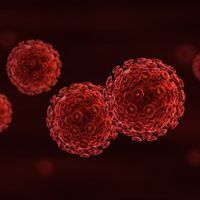The Social and Socioeconomic Benefits of HIV Treatment
Findings from two studies presented July 22 at the International AIDS Society (IAS) Conference in Vancouver, Canada indicate that HIV treatment for illicit drug users appears to improve their social and socioeconomic wellbeing, in addition to their overall health.

Findings from two studies presented July 22 at the International AIDS Society (IAS) Conference in Vancouver, Canada indicate that HIV treatment for illicit drug users appears to improve their social and socioeconomic wellbeing, in addition to their overall health.
Lindsey Richardson, DPhil, an assistant professor in the Department of Sociology at the University of British Columbia and research scientist with the British Columbia Centre for Excellence in HIV/AIDS, presented the findings at the world’s largest scientific conference on HIV and AIDS, organized this year by the IAS in partnership with the University of British Columbia Division of AIDS.
Whereas the health benefits of antiretroviral therapy (ART) for HIV have long been well established, the University of British Columbia research team that conducted the study sought to learn more about any possible secondary benefits of ART.
Both studies presented by Richardson used data from the AIDS Care Cohort to evaluate Exposure to Survival Services (ACCESS), an ongoing study of about 1,000 patients living with HIV and AIDS in Vancouver who use illicit drugs. The ACCESS study is funded by the U.S. National Institutes of Health (NIH).
For the first study, patients who were illicit drug users and were initiating HIV therapy for the very first time were more likely to transition out of homelessness, start addiction treatment, and begin a romantic relationship, when compared with those who did not start ART. For the second study, Richardson and colleagues found that adherence to ART—defined in the study as patients having their HIV medication dispensed at least 95% of the time—increased the probability that patients would transition out of homelessness and cease involvement in risky behaviors, such as sex work, drug dealing, or street-based income generation.
“These studies find HIV treatment and care may be able to help reduce inequities by promoting improved health, socio-economic stability and improved quality of life,” said Richardson. “This research points to how HIV care and treatment can open doors to improvements in other areas relevant to people's social determinants of health. Both studies reinforce the benefits of early ART initiation and consistent ART treatment, particularly for marginalized and hard-to-reach individuals.”
The research team feels their findings indicate additional benefits of HIV treatment that could be enhanced by income and housing support, as well as other services.
“Treatment as Prevention (TasP)—providing full and early access to antiretrovirals to those living with HIV—provides a path to ending AIDS in our lifetime that is founded on firm scientific evidence,” said Julio Montaner, OC, MD, OBC DSc, FRCPC, FCCP, FACP, FRSC, director of the British Columbia Centre for Excellence in HIV/AIDS and a professor of medicine at the University of British Columbia. “Dr. Richardson's groundbreaking research indicates TasP’s open and accessible approach to healthcare can have significant social and economic implications.”
2 Commerce Drive
Cranbury, NJ 08512
All rights reserved.